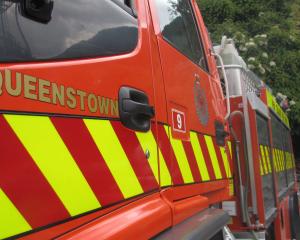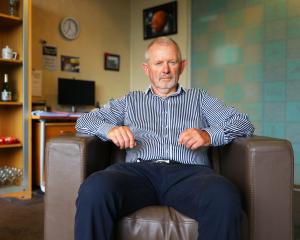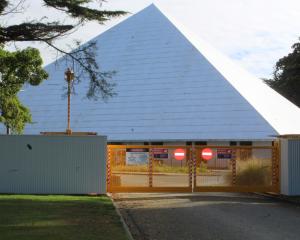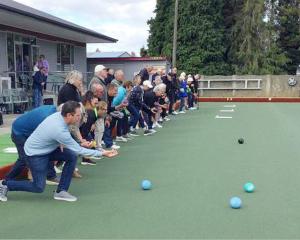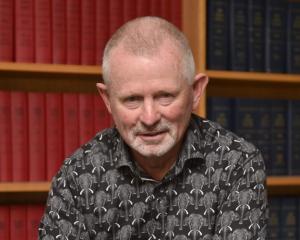The Otago-Southland coroner, David Crerar, has recommended Maritime New Zealand (MNZ) add an ''education programme warning'' about the dangers of smoking cannabis, following the inquest into two Southland men who died after a large wave hit the boat Extreme 1 in January.
In his formal written findings into the deaths of Shaun David Bethune (23), of Ryal Bush, and and Lindsay James Cullen (59), of Brydon, Mr Crerar said both men died on January 3 near Ruapuke on Foveaux Strait.
While travelling on the boat to a sheltered anchorage to fish, Extreme 1 was struck side-on by a large wave and overturned.
''Both Shaun Bethune and Lindsay Cullen ended up in the water and whilst swimming to safety succumbed to the cold water conditions.
''The cause of each of their deaths was determined at autopsy to be hypothermia due to cold water immersion.''
Mr Crerar said a toxicological analysis on both men showed traces of cannabis. Shaun Bethune's blood THC (tetrahydrocannabinol) level was consistent with him having smoked the equivalent of a single cannabis cigarette within eight hours of his death.
While it was impossible to judge how it had contributed to, or resulted in, their deaths, it was ''unlikely that the consumption of cannabis enhanced the survival chances''. MNZ had education programmes stating ''water and alcohol don't mix'', but one warning those in boats not to smoke cannabis should also be added.
''The effects of cannabis can decrease survivability in cold water,'' Mr Crerar said.
The survival of the other three on the boat - owner Barry Bethune, farm manager, of Ryal Bush, and sisters Carol Saxton, sales manager, of Wellington, and Denise Zonneveld, nurse, of Edendale - were ''directly attributable'' to Mr Bethune's insistence life jackets be worn.
Mr Crerar said after launching the 7.2m aluminium catamaran from Bluff, in the evening of January 3, skipper Mr Bethune ''ensured that all persons on board donned life jackets''.
Navigating by observation, assisted with a chart plotter, he altered his course to cater to the swell, tides and wind-changed water conditions, for the most comfortable and safest ride.
''When Extreme 1 reached a position about 2km to the west of White Island, a large wave struck the rear and side of [the boat], causing it to turn upside down. When Barry Bethune had accounted for all his passengers in the water, he attempted to dive underneath the upturned [boat] in an attempt to recover the EPIRB, which was hanging by a lanyard from the throttle.''
Despite several attempts he could not access the cabin of the boat. The group at that stage was swimming and drifting easterly, attempting to reach land.
The group drifted to about 300m of White Island, but the current was too strong to attempt a landing and the plan was readjusted.
Mr Crerar said as the group approached a bay in Ruapuke Island, Ms Zonneveld saw a boat - Easy Rider - moored in the bay.
''It was about this time that Shaun Bethune showed signs of distress. The others saw that his eyes were closed and that he was turning blue.''
Ms Zonneveld confirmed he had died and shortly after checked on Mr Cullen.
''He was 'white and non-responsive'. Barry Bethune also checked on Lindsay Cullen and they agreed that he had also died.''
The remaining three then swam towards Easy Rider and called for help. Mr Bethune tried to climb on board, but could not. Their yelling raised the attention of people on shore.
''Rewai Karetai, the owner of Easy Rider, rowed out to the survivors in a small dinghy and assisted them to shore.''
Mr Karetai and seven others died in Foveaux Strait two months later when Easy Rider capsized and sank.
On shore the three were given dry clothing and blankets by Gloria Davis, Mr Karetai's wife, who also contacted police on her cellphone to arrange a helicopter, as Mr Bethune's physical condition of concern.
Mr Crerar said one ''significant lesson'' learnt from the tragedy was a person who might end up in the water was far more likely to survive if appropriate clothing was worn.
''As in tramping and mountaineering, wool is better and layers of wool is best.''
While he did not necessarily consider it the skipper's responsibility to ensure passengers were clothed appropriately, education was ''necessary''. It was ''significant'' to record that of the three survivors - who spent more than three hours in Foveaux Strait - Ms Zonneveld and Ms Saxton ''survived best'' due to the clothing they wore. Both women were dressed similarly, with Icebreaker singlets, long-sleeved polo neck fleeced tops, woollen shirts, reflective jackets and beanies.
''Barry Bethune was suffering badly from the effects of his immersion ... he was not clothed as well as the other surviving passengers.''
Mr Crerar said the term ''rogue wave'' was a ''misnomer'' - because such waves were known to exist, they were naturally occurring phenomena which should be expected on Foveaux Strait. He suggested extra vigilance be given by skippers, with a crew member on lookout for approaching ''larger than normal'' waves.
''The action expected to be taken would be for the bow of the boat to be turned into the wave.''

